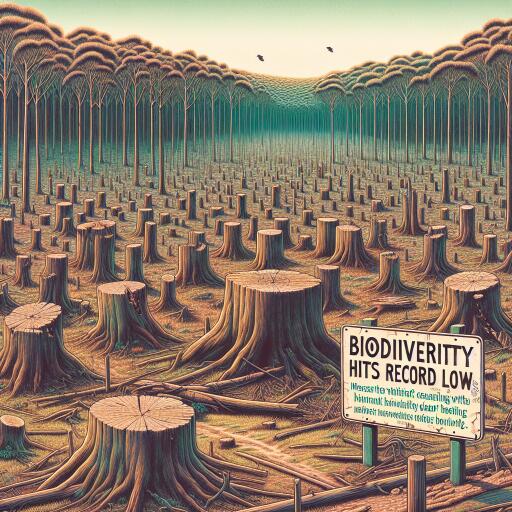
NSW Biodiversity Hits Record Low, Habitat Clearing to Blame
In a stark revelation, the latest government report shines a troubling light on the ongoing decline of biodiversity in New South Wales (NSW), leaving conservationists and environmental advocates sounding the alarm over the urgent need for systemic policy reform.
The unveiling of the NSW Biodiversity Outlook Report has set off alarms, showcasing a statewide ecological degradation that has crossed into critical territory. With data comparing the current state to levels observed in 2020, it’s clear that NSW’s flora and fauna are facing an unprecedented threat.
“The confirmation of biodiversity decline across the board marks a critical juncture for conservation efforts in NSW,” explained a spokesperson from the Nature Conservation Council of NSW (NCC), a leading voice in the state’s environmental advocacy efforts. “The data speaks volumes of a biodiversity crisis that demands immediate action if we are to steer away from irreversible damage.”
According to the NCC, changes to land management and conservation laws in 2016 have led to a significant increase in habitat destruction—an issue at the heart of the biodiversity crisis. These modifications allowed for less regulated land clearing, effectively putting numerous ecosystems and wildlife species at risk.
The report’s findings are a cause for concern, with projections suggesting that half of NSW’s threatened species could vanish over the next century unless decisive action is taken. “The current state of our habitats can support only a fraction of the biodiversity we once hosted. This isn’t just alarming—it’s a call to action,” the spokesperson added.
There has been considerable disappointment expressed towards the government’s fulfillment of its own environmental promises. Despite assurances to curb unchecked land clearing and overhaul the biodiversity offset scheme, critics argue that not enough progress has been made. The existing policies are viewed as insufficient to address the scale of the ecological and climate crises faced by NSW.
With NSW marked as a national hotspot for deforestation, the annual loss of 50 million trees and over 100,000 hectares of land has prompted further outcry. “These figures should be a wake-up call. Our government must reevaluate its stance and take bold steps to safeguard our environmental heritage,” stated the NCC spokesperson.
The call for action includes adherence to previously outlined reforms, notably those recommended in the Henry Review. Specifically, this involves closing legal loopholes that currently facilitate widespread habitat clearance and reaffirming the government’s commitment to revamping conservation laws.
There is a notable public support for reinforcing habitat protections, with recent surveys indicating a strong majority in favor of legal reforms to prevent further environmental degradation. This public sentiment underscores the urgency for the NSW Government to recommit to its conservation obligations and strive for a ‘nature positive’ status.
As NSW confronts one of its most severe biodiversity crises, the path forward requires a unified effort from the government, environmental groups, and the community at large. Only through decisive action and a renewed commitment to sustainable policies can the state hope to recover and preserve its rich natural heritage for future generations.





Leave a Reply